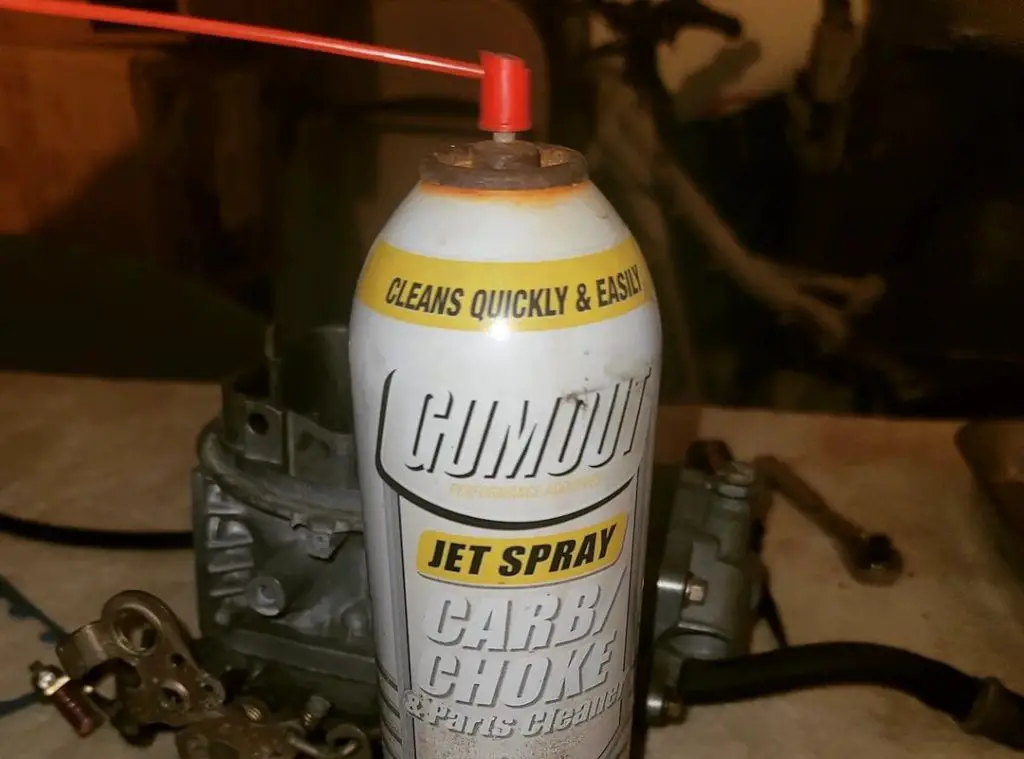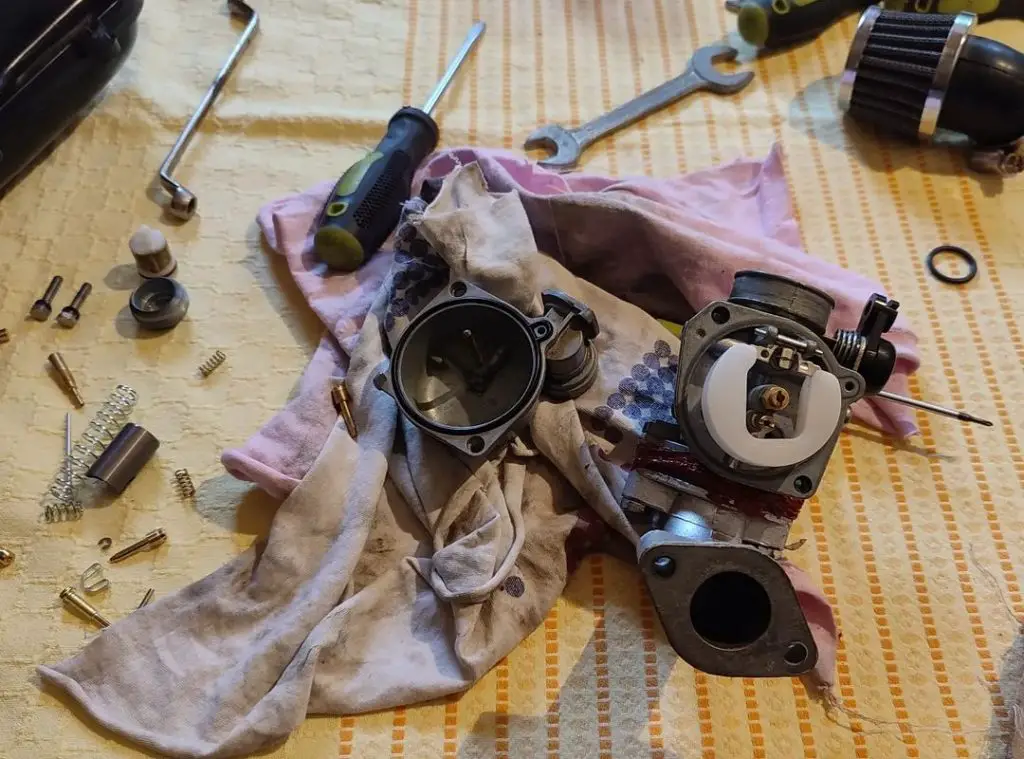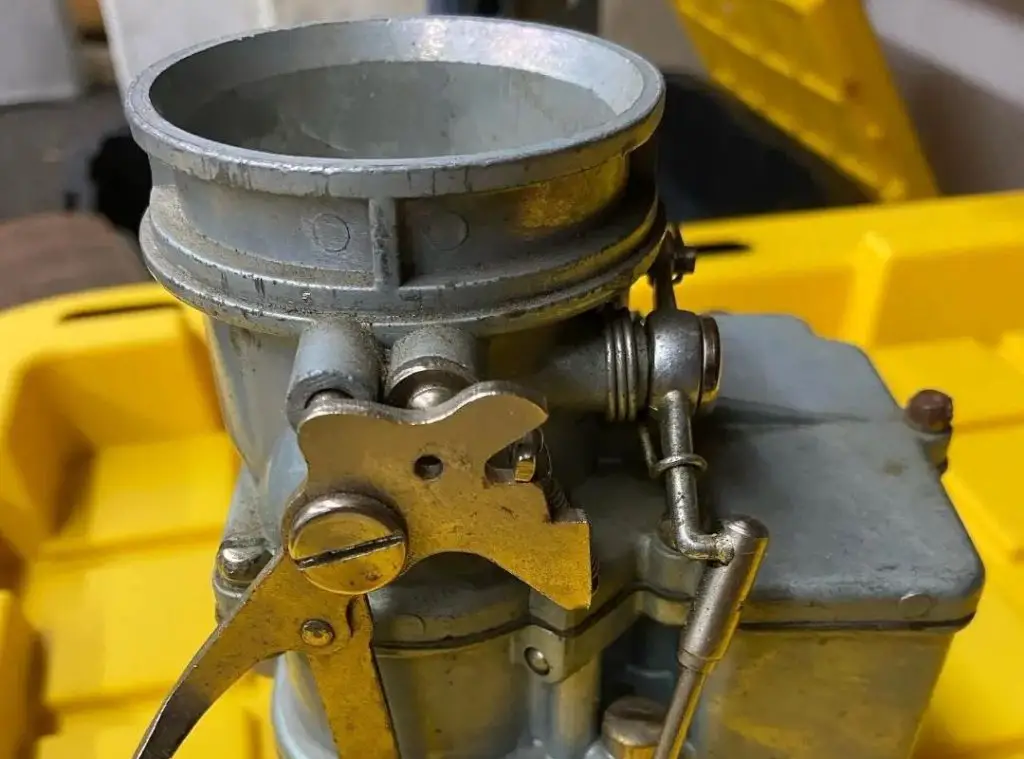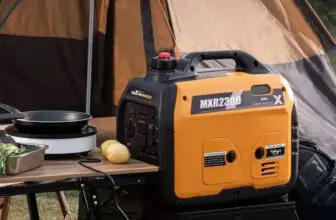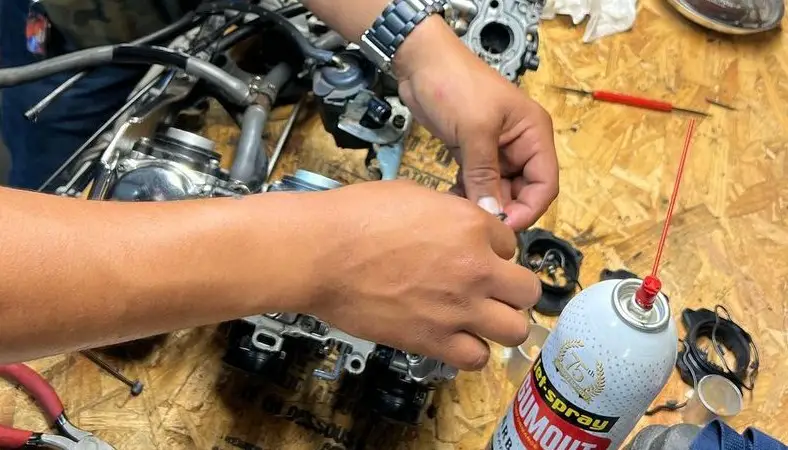
Like any metering system, the carburetor injection is located near the internal combustion engine in the alternator of the car, thus constantly interacting with fuel and hot air. Since it is a mechanical device with some moving parts, which are outside, it tends to get dirty. It can be dust, soot, dirt, or engine oil that settles both outside and inside the device.
Carburetor Review
Contents
The carburetor is a must-have power unit for the internal combustion engine of generators. The carburetor is needed to form the air-fuel mixture. If the fuel supply system is equipped with a carburetor, a fine fuel-air mixture enters the engine cylinders, which are easily ignited by a spark.
Precautions
Safety precautions must be taken before working on the carburetor – this is the first rule. Safety goggles are a must, as well as special gloves since the chemicals in the gasoline can irritate the skin. Another precaution is to have a well-lit, clean, and ventilated work area.
How it Works
The carburetor prepares a combustible mixture of air and fuel and feeds it to the engine in the necessary proportions. The construction of the simplest carburetor consists of a float chamber and a mixing chamber connected with each other.
A float regulates a constant fuel level in the first chamber. Fuel is transferred to the mixing chamber through the nozzle. As it passes through the atomizer it is broken up by the air jet and atomized and mixed with it. The result is an easily ignitable air-fuel mixture.
Tools and Materials
Tools and materials needed to clean the carburetor:
- Carburetor cleaner;
- Combination wrench or adjustable wrench;
- A smaller flathead screwdriver;
- Pliers with fine jaws;
- Fine wire or needle.
Pros and Cons
Advantages and disadvantages of cleaning the carburetor yourself:
Pros:
- The contamination can be small and a can of carburetor cleaner and a rag will suffice;
- The possibility of saving on the work of the master;
- You can clean when it’s convenient and necessary.
Cons:
- The carburetor may need to be disassembled for cleaning, which can be difficult for a beginner.
How to Clean Generator Carburetor
Step-by-step guide on how to clean out the carburetor:
- Begin by draining the gas tank and disconnecting the fuel line.
- Next, remove the carburetor bowl and use a brush or compressed air to remove any dirt or debris.
- Once the bowl is clean, reattach it and begin cleaning the jets. Use a small wire brush or needle to clean out the jets, being careful not to damage them.
- Finally, reassemble the carburetor and reconnect the fuel line. Fill the fuel tank and test the generator to make sure it is running properly.
Result
As a result, your alternator will run steadily and all signs of a dirty carburetor will disappear. After a major clog, it may be necessary to generate carburetor adjustment. If after all the actions described in this article, the generator continues to work poorly or does not work at all, in this case, we recommend contacting a service center.
Tips
Many manufacturers specify in the manual of the generator when it is necessary to clean the generator. I recommend cleaning the alternator every time the alternator is serviced. That way you won’t get too much dirt on the carburetor and the cleaning procedure will be easier.
Frequently Asked Questions
The questions that most often arise with generator owners
Can you clean a carburetor without taking it apart?
Yes, you can be cleaning a carburetor without taking it apart. But this kind of scrubbing can’t always help. It depends on how dirty the carburetor is.
Where do you spray carburetor cleaner on a generator?
The carburetor cleaner should be sprayed into the carburetor through the opening at the top of the carburetor. You should spray carburetor cleaner into the carburetor while the generator is turned off. How to use your carburetor cleaner specifically, will be indicated on the can.
Can you use wd40 as a carb cleaner?
No, WD-40 is a multi-purpose lubricant and does not contain any chemicals that will break down carbon deposits. It is better to use the cleaner recommended by the generator manufacturer.
Conclusion
Unfortunately, the fuel we fill into the tanks of our generators is not always of high quality. Dirt, corrosion products, and water are mandatory components of low-quality gasoline.
Contamination factors can also include dust and dirt on the street, they also clog our generator. All of these cause contamination of the unit.
Therefore, cleaning the carburetor is simply necessary. We are talking about both routine cleaning (preventive), and cleaning, which is caused by a malfunction of the generator.

